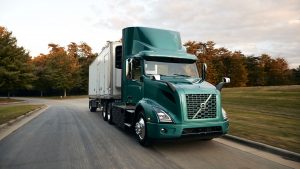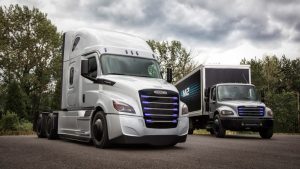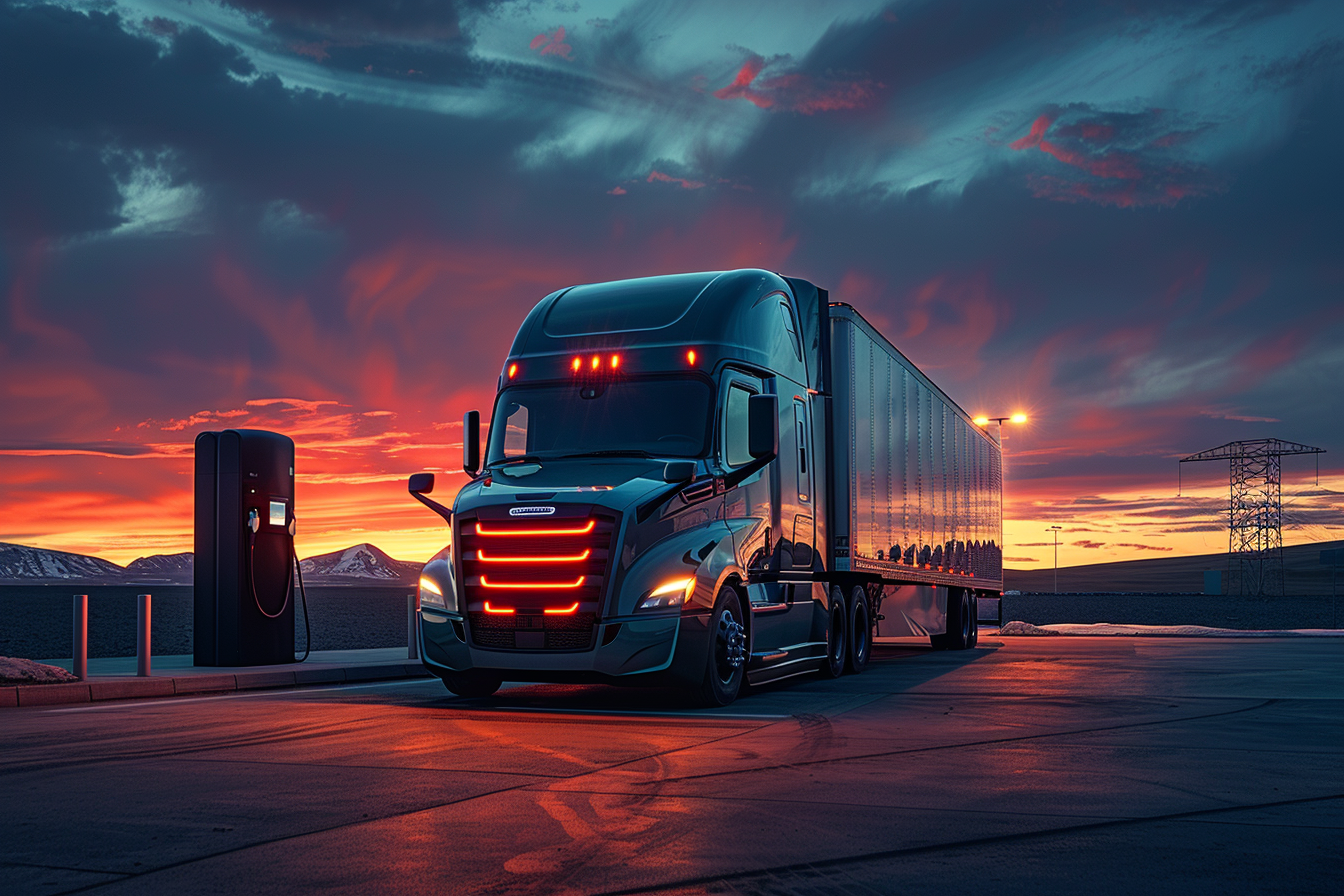- Are EV mandates in trucking realistically timed or set for a collision course with industry capabilities? Explore the ATA’s sharp critique and the unfolding scenario.
- Discover how the lack of charging infrastructure could brake the rapid shift to electric trucks—what solutions are industry leaders proposing?
- Navigating new terrains: How are trucking firms adapting to stringent EV mandates through innovative strategies and technologies?

EV mandates in trucking are steering significant transformations, aiming to promote zero-emission vehicles.
The push towards electric vehicle (EV) mandates in trucking marks a pivotal shift in regulatory landscapes, aiming to mitigate climate impact by promoting zero-emission vehicles. However, this transition has sparked significant debate, particularly from the American Trucking Associations (ATA), which highlights concerns about the practicality and timing of these mandates. This article dives into the ATA’s critical viewpoints alongside the broader implications of these regulatory shifts. Learn more about the American Trucking Associations and their role in shaping trucking regulations, click here.
Understanding EV Mandates in Trucking
Globally, governments are instituting EV mandates with ambitious targets to phase out diesel-powered trucks in favor of electric alternatives. These mandates aim to reduce environmental pollution and achieve sustainability goals. However, the ATA argues that these mandates may be misaligned with the current realities of the trucking industry, particularly regarding technology readiness and the economic burden on trucking companies. For more news and updates on EV mandates in the trucking industry, check out this page.
The Practical Challenges of EV Adoption
Technological Barriers
“The ATA points out that current EV technology may not yet be sufficient for the unique demands of long-haul trucking, where battery range and durability are critical. The industry’s concern is that the technology to support heavy-duty truck operations reliably over long distances without significant downtime for charging is still in development.”
Enjoying our insights?
Subscribe to our newsletter to keep up with the latest industry trends and developments.
Stay Informed
To explore our news of advancements in battery technology critical for EV adoption, visit this link.
Infrastructure Deficits

Current EV technology may not meet the demands of long-haul trucking, where battery range and durability are critical.
A significant hurdle underscored by the ATA is the lack of necessary charging infrastructure. The organization stresses that without a robust network of high-capacity charging stations strategically located along major freight corridors, the practical implementation of EVs in the trucking sector is not feasible. For additional insights into the development of charging stations and infrastructure, explore this page.
Regulatory Landscape and Compliance
The ATA criticizes the one-size-fits-all approach of some governmental EV mandates, which do not account for the varied nature of trucking operations across different regions and sectors. The association calls for more nuanced regulations that consider the operational realities of the trucking industry, rather than imposing blanket mandates with rigid timelines. To stay updated on the latest trends in politics, laws, and policies shaping the regulatory landscape, check out this link.
Technological and Infrastructure Needs

The ATA criticizes a one-size-fits-all approach, calling for regulations that consider the diverse operational realities of trucking.
Highlighting the need for advanced technology and better infrastructure, the ATA advocates for increased investment and collaboration between the public and private sectors. Such efforts should focus on accelerating technological advancements in EVs and expanding the charging infrastructure to support a seamless transition to electric trucks. Explore in-depth coverage of the trucking industry’s latest trends and challenges, via this link.
Financial Implications for Trucking Firms
From a financial perspective, the ATA expresses concerns about the economic impact of transitioning to an all-electric fleet. The high costs of electric trucks and the additional investments needed for charging infrastructure could pose substantial financial challenges, particularly for smaller operators. The association urges policymakers to consider scalable incentives and support mechanisms to alleviate these financial burdens. To understand the strategies being employed to mitigate the economic impact in transportation, explore this link.
Future Outlook: Adaptation Strategies

Effective EV mandate implementation requires consultation with industry stakeholders to ensure realistic and achievable goals.
Despite these challenges, the ATA acknowledges the inevitable shift towards electric vehicles and suggests that trucking firms begin preparing through strategic planning and pilot testing. These steps would help the industry adapt more smoothly and ensure that businesses can meet future regulatory requirements without significant disruption. To stay abreast of the latest trends shaping sustainability in the trucking industry, click here.
FAQs: EV Mandates in Trucking
Q: What does the ATA suggest for more effective EV mandate implementation?
A: The ATA recommends developing mandates in close consultation with industry stakeholders to ensure they are realistic and achievable, reflecting the current state of technology and infrastructure.
Q: How are trucking companies reacting to these mandates?
A: Many are cautiously evaluating their options, with some exploring pilot programs to gauge the viability of electric trucks under real-world operating conditions.
Major Milestones in EV Mandates for Trucking
- Government Action: Several global governments have recently increased their mandates, with some countries setting ambitious deadlines for the total elimination of diesel trucks in favor of electric alternatives.
- Technological Advances: Despite challenges, there have been significant advancements in EV technology, particularly in battery life and charging solutions, which may soon align with the demands of long-haul trucking.
- Infrastructure Initiatives: Public and private sectors are initiating collaborative projects to enhance the charging infrastructure, crucial for the widespread adoption of electric trucks.
- ATA’s Advocacy: The American Trucking Associations continues to engage with policymakers, advocating for realistic timelines and support for trucking companies during this transition, ensuring that mandates consider the operational diversity of the industry.
- Financial Support and Incentives: Governments are beginning to offer more substantial incentives for trucking companies to transition to electric vehicles, which could help mitigate the financial challenges associated with these changes.
Key Takeaways: What Industry Leaders Should Know
As the trucking industry navigates the complexities of EV mandates, understanding the criticisms and recommendations from organizations like the ATA is crucial. By considering these insights, industry leaders can better prepare for the transition, advocate for reasonable regulatory frameworks, and invest wisely in technologies that align with future standards. To dive deeper into the topic of government intervention in transportation and its role in the global market, follow this link.
Explore External Resources on Electric Truck Mandates
- Biden-Harris Administration’s EV Infrastructure Initiatives: Learn about the U.S. government’s efforts under the Biden-Harris administration to expand and support the electric vehicle infrastructure, including significant investments in EV charging stations. Explore the Biden-Harris EV Charging Action Plan.
- Department of Energy (DOE) Projections: Discover the Department of Energy’s strategies for making zero-emission medium- and heavy-duty electric trucks cost-competitive by 2035, emphasizing technological improvements and federal funding. Read about the DOE’s future projections for electric trucks.
- Federal Highway Administration Grants: Review how the Federal Highway Administration is distributing grants to enhance EV charging infrastructure across the U.S., part of broader efforts to improve EV accessibility and reduce transportation emissions. Learn more about the FHWA’s grant programs for EV infrastructure.




















